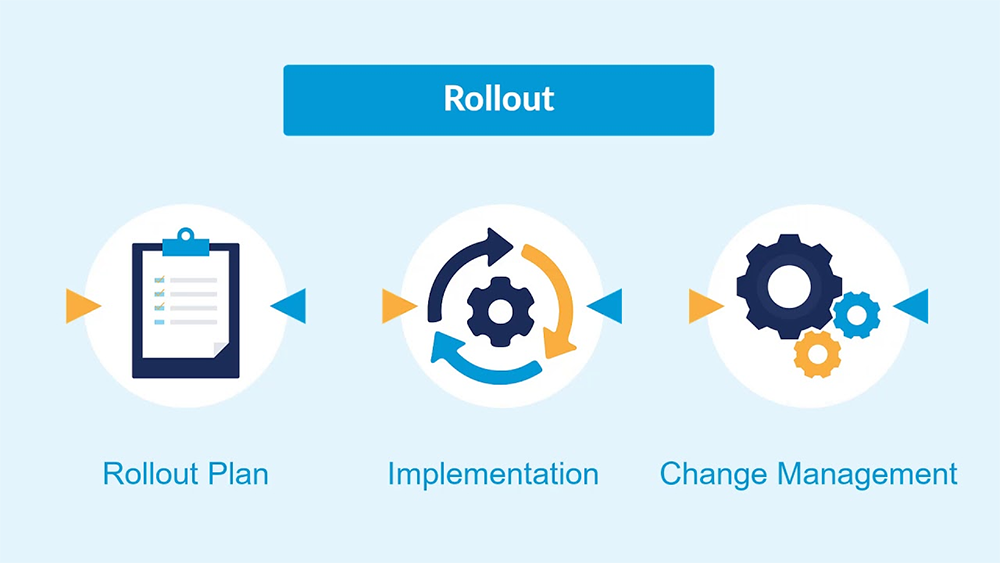The 6 Worst Pitfalls of Software Rollouts
People often dislike change, which is especially true when it involves their work schedule. In the hopes of immediately increasing output and performance, have you ever tried to introduce your staff to “That wonderful app”?
Introducing new software to your team in a way that doesn’t lead to wasted time and undermines your optimization efforts can be disastrous.
This post will look at six frequent blunders managers make when introducing new software to their teams. These blunders may easily be avoided, ensuring your success as a manager and ensuring that your transition goes smoothly.

New Software Rollout Pitfalls:
There are seven common pitfalls to avoid when introducing new technology to a team because of the wide variety of teams, enterprises, and business situations.
1. Not Testing the Software, Yourself
For example, most SaaS providers provide 15- to 30-day free trials. Several Bradford based companies offer live demonstrations. There is so much to see and do, and it would be a pity not to use it all.
Doing so will ensure your evaluation doesn’t miss out on important aspects like:
1. The tool’s usability
2. Workflow integration for both the individual and the business
3. The availability and readiness of client service
4. There is a steep learning curve involved.
2. Not Addressing the Question of “Why.”
What’s the point of the new software if no one cares? Why should they put in the time and effort to understand and implement it? What went wrong with the use of post-it notes and spreadsheets?
It’s not enough to state “because I said so” when explaining the rationale for a new tool or method. Consider the case of an app implemented at the office only to be promptly removed.
Time and money are being wasted in spades. It also shatters any prospects for the widespread use of the software.
Team members should know how the new software connects with corporate goals and what the team is expected to accomplish. That way, people will be less inclined to utilize it in the future.
3. Insufficient Support from A “Champion.”
No matter how much you like the new tool, it doesn’t mean others will. You’ll need the support of your colleagues to ensure that the rollout is a success across the board. Invite a team colleague to test out the new software with you.
That way, you’ll be able to see any bugs or problems with the program before it’s implemented. In addition, you may not be aware of all the benefits or applications of the program.
As a result, you’ll miss out on critical advocates who may assist you get the new solution up and running when it’s made available to the rest of your staff.
4. Doing It at The Wrong Moment
When and how you roll out new software are equally essential. A new solution should not be implemented during busy seasons (at the beginning of the year when new projects are coming in or at the end of the year, when enterprises are hurrying to shut down).
Adopting new software might be associated with a loss of time if you choose the incorrect moment to implement it. You may not be able to perform it successfully again in the future because of this.
5. Insufficient Training
It’s impossible to expect the entire staff to figure out the program miraculously, even if you’ve chosen the right time and a small group of supporters.
Your employees may become bogged down in the initial obstacle if they haven’t been trained. The overwhelming majority of software developers also provide first-rate customer support to their credit.
However, this isn’t sufficient. It is certain that as time goes on, the team will have more and more questions as they become more familiar with the tool. Your staff may give up if you don’t provide them with clear instructions and rules.
6. You Don’t Use It Yourself
As soon as the new solution begins to take hold and you, the one who picked it, no longer remember what you’ve been through, you’ll be happy.
You are making a grave error by leaving before you have had a chance to witness the solution in action. If you’re the manager in Bradford businesses, you should be able to recognize its benefits. In addition, you should be available in the event of emergencies.
Never underestimate the power of setting an example for others to follow. If you don’t utilize the program, why should your team members?
Conclusion:
Those who desire to join the digital revolution have many options. The implementation of new software requires considerable care on the part of management to avoid failure.
Lack of testing, inability to clarify goals and expectations, unnecessarily sophisticated solutions, poor cooperation and scheduling, and a lack of training and consistency can slow down or even undermine the tool’s adoption.
A well-chosen solution may help teams and managers around Yorkshire area board their new software and set sail for success with the proper time, preparation, and setup. Even if you and your team put in a lot of time and effort, you can’t always count on new technology to meet your expectations. Just because it happened doesn’t mean you should give up on your search! Contact Bradford Software Development so we can help you find the solution you are looking for.
